Windows Core OS: The complete guide
Keep up with everything Windows Core OS with our handy guide that explains everything you need to know.

Trying to keep up with Microsoft's internal Windows Core OS (WCOS) project is no easy task. Even we find it challenging to keep up with all the different codenames, plans, and changes being made to Windows with Windows Core OS. So, to try and keep things in line, we've compiled this ultimate guide for Windows Core OS, CShell, and everything in between.
Windows Core OS is something we've been writing about since early 2017 and has been in the works for much longer. It's the future of Windows, which takes the shared code of OneCore and builds a modern, legacy-free OS on top of it. Windows Core OS, along with CShell, allows Microsoft to create new versions of Windows 10 quickly, and share standard components and features across different device types and WCOS versions quickly and easily.
Let's get into the nitty-gritty details.
Building a future OS today
What is Windows Core OS?

To answer this question, we first have to explain what Windows Core OS isn't. Today, Windows 10 is several different operating systems across the many devices types it can run on. There's Windows 10 for desktops, Windows 10 for HoloLens, Windows 10 for IoT devices, Windows 10 for Surface Hub, Windows 10 for Xbox, and there was also a Windows 10 for phones. Although these are all Windows 10, they're all technically different operating systems that don't run very well on devices for which they are not designed. Windows 10 desktop, for example, would be a terrible experience on a phone, and vice versa.
All of these versions of Windows 10 do share universal elements, however, such as OneCore and OneCoreUAP which are layers of the operating system that you can find on all of these versions of Windows 10 that enable things like the Universal Windows Platform. But the rest of everything included in these operating systems are specific to that version of Windows. Not everything is interchangeable or shareable between them, as most of these features have to be rewritten each time by the teams working on these individual versions of the OS for them to function.
A great example of this is with the Start menu and Action Center on Windows 10 for desktop and Windows 10 Mobile. While Microsoft tried very hard to make these experiences seem the same, underneath, they were very different. Keen-eyed users would have likely noticed differences in features between the two Start experiences, and that's because for one feature to be available on both platforms, it needed to be built twice, not just once. Live tile folders are a perfect example of this, a feature that was first found on Mobile took over a year to appear on the desktop.
All the latest news, reviews, and guides for Windows and Xbox diehards.
Windows Core OS is the future of Windows.
As it stands today, there's a lot of extra work and overhead that Microsoft needs to deal with every time it wants to build a version of Windows 10 for a new device type, such as foldables. Windows 10 as it exists on its own wouldn't be a good fit for foldable PCs. Microsoft could start building yet another version of Windows 10 for this category of devices, but then they'd have to rebuild many of the existing features you can find on other versions of Windows 10 already to ensure those features behave and operate correctly on this form factor. It's a waste of resources and effort.
That's where Windows Core OS comes in. With Windows Core OS, Microsoft is building a universal base for Windows that can be used across all these different devices. Instead of having to develop a new version of Windows 10 for every new device type that comes along, Microsoft can simply use Windows Core OS to start. They would then pull in features and functions it has already built for it, and create it as an OS for that device type. All that would be created with less overhead and fewer resources used.
Windows Core OS strips Windows down to the bare minimum. It doesn't include any legacy components or features, and sticks to UWP as a core for the operating system as it's lighter and already universal. From there, Microsoft can build out Windows Core OS with different components and features that it can then apply to devices where necessary. But this time, those components and features can be shared across the many different devices Windows Core OS will run on.
It's essentially a modular platform. Any feature or function Microsoft builds for it can then be applied to any Windows Core OS device that it wants. For example, let's imagine Microsoft builds out Win32 support as a component for Windows Core OS for desktop and laptop devices. Since that work has now already been done, Microsoft can also bring that Win32 component to HoloLens 2 or Surface Hub 2X running Windows Core OS, enabling that functionality on those experiences too.
The big selling point for Windows Core OS for Microsoft is that for the people working on Windows, it takes way less time and resources to build new Windows experiences when it's required. If Microsoft or any of its partners want to develop new device form factors running Windows, they no longer have to wait years for Microsoft to build up a version of Windows 10 that works for it. Using Windows Core OS, they can create new Windows experiences in a fraction of the time and way more efficiently.
Explaining composable
What is CShell for Windows?
The shared component idea extends to the UI as well, thanks to a universal shell Microsoft has been building called Composable Shell, also known as CShell for short. CShell is the other half of this universal idea for Windows Core OS, and allows Microsoft to build shell experiences that can be shared across devices, and even bundled up together where it makes sense. For example, any shell-facing feature like an Action Center, Start menu, or taskbar, can then be used across all CShell-powered devices without having to rewrite them to fit on different devices every single time.
Imagine a gaming PC that changes to an Xbox "game mode" when an Xbox controller is connected.
Let's imagine Microsoft decides to finally build a Surface Phone running Windows Core OS. It'll feature a mobile experience primarily, but if you connected it to a Continuum dock, Microsoft could also bundle the actual desktop experience it built with CShell. So instead of getting a fake desktop experience as you did with Windows 10 Mobile, you'd boot into the real desktop experience Microsoft made for CShell, which runs on actual desktops. That's pretty cool.
Unfortunately, Microsoft seems just about done with trying to build phones that run Windows, so insteaad, we can apply this idea to something a little more plausible. Tablets! Microsoft can build out dedicated desktop and tablet mode experiences with CShell, and apply them to 2-in-1 devices like the Surface Pro. So whenever the user enters tablet mode, instead of getting a mediocre experience, it can boot into a dedicated tablet mode that Microsoft built for CShell. On some devices, maybe tablet mode is the only experience available, and on others, there's more than one.
Or imagine a gaming PC, which, when being used with a mouse and keyboard, uses an actual regular desktop interface with a taskbar and Start menu. When an Xbox controller is connected, however, it boots into a "Game Mode" that enables the same Xbox shell you can find on Xbox consoles, except it's all running on your PC and has all your PC games ready to go. That would be pretty cool. These ideas are all very possible with CShell and Windows Core OS.
There's more than one experience
The different flavors of Windows Core OS
Now we know all about Windows Core OS and what it is — let's take a look at all the different configurations of Windows Core OS we know about so far. Officially, there are two devices that Microsoft is shipping with Windows Core OS: HoloLens 2 and Surface Neo.
There are a whole bunch of different codenames and words used to describe the different versions of WCOS. So we've tried to include all the names Microsoft uses for these editions of Windows Core OS.
Windows 10X
Windows Core OS for laptops and foldable PCs
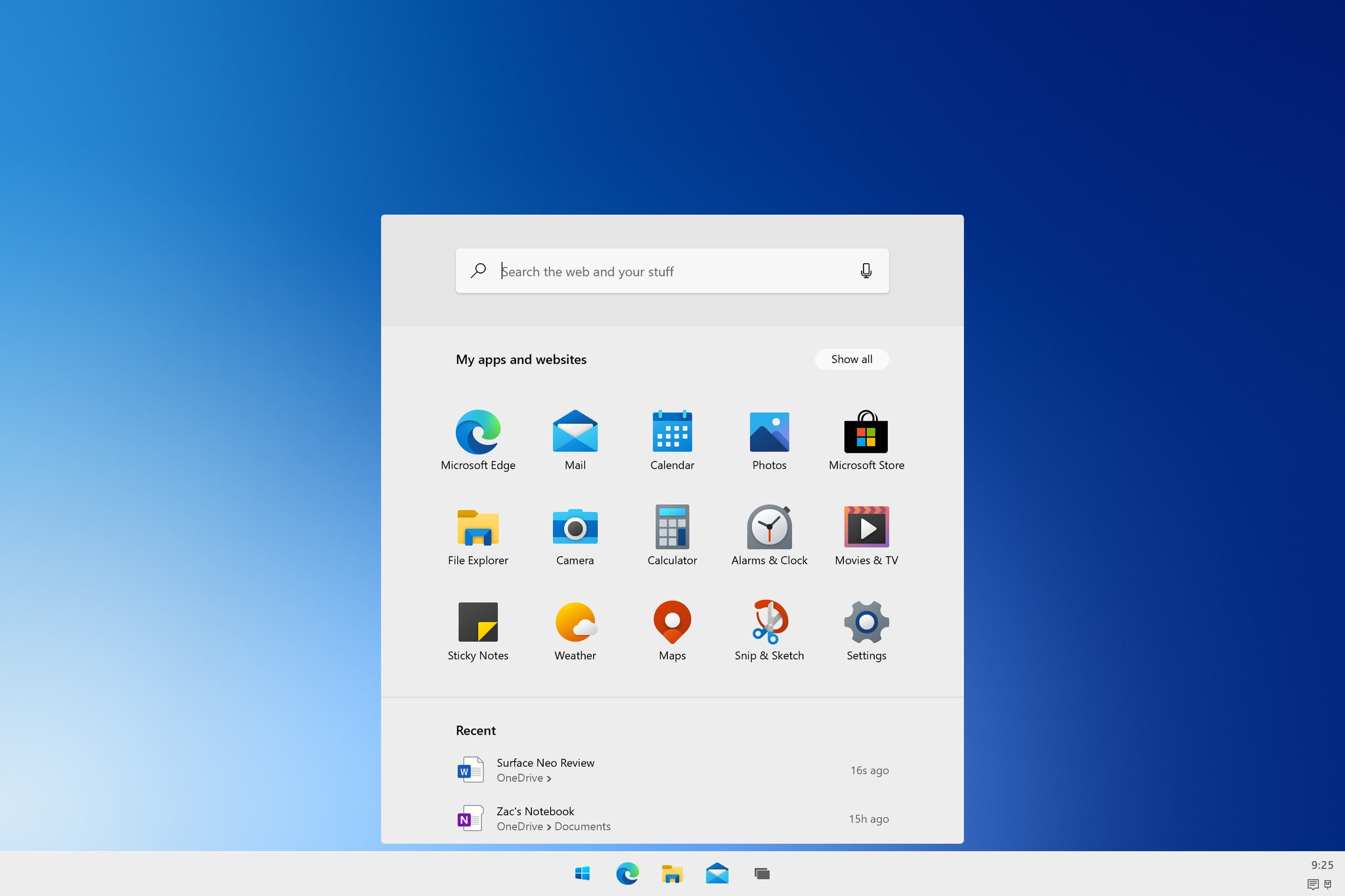
- Official Name: Windows 10X
- Codename: Santorini
- WCOS Edition: ModernPC
Windows 10X is a flavor of Windows Core OS that appears to be for both foldable PCs and traditional laptops and tablets.
Microsoft is building out Windows 10X as the version of Windows Core OS that runs on consumer and commercial foldable PCs, laptops, and 2-in-1 tablets. It's a new take on what Windows can be, introducing a brand new user experience that's a little more like Chrome OS and less like old-school Windows. It has deep ties with web experiences and puts universal Windows apps front and center, and will eventually be able to run traditional desktop apps from outside the Microsoft Store too.
Windows 10X features a centered taskbar experience, and can adapt depending on the posture of the device it's running on. There's a simple app launcher that doesn't feature live tiles, which lists your installed apps from the Microsoft Store or pinned websites.
Foldable PCs are coming
Centaurus and Pegasus
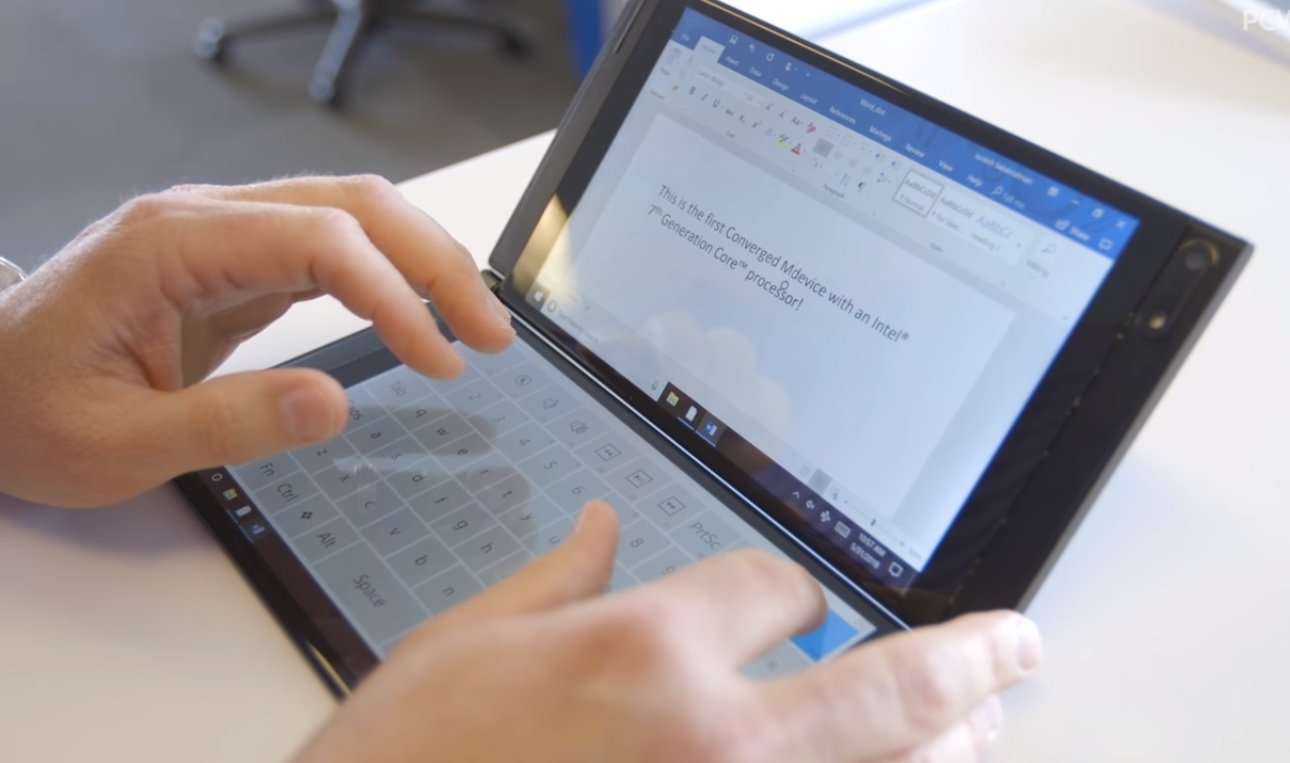
Regarding those sub-codenames, Centaurus is the codename Microsoft uses for Windows 10X on foldable PCs like the Surface Neo. These can range from single-screen to dual-screen tablet or laptop-sized devices, kind of like the Intel TigerRapids prototype. Windows 10X's shell is tailored a little differently when running in the multiple modes a foldable device might put forward, such as tablet mode, laptop mode, or somewhere in between. Pegasus is what we believe to be Windows 10X but for more traditional form factors, like a laptop or 2-in-1 with a physical keyboard. These are devices with no unique bending capabilities. This tailored version of Windows 10X will have a more familiar PC experience, but with the same design aesthetic found on Centaurus.
Why the 2-in-1 PC's next big thing will be dual displays
This version of Windows Core OS will likely be the "flagship" version that Microsoft pushes the most. It's the version that most normal people will get to interact with, as it'll be available more on consumer-orientated PCs. Its primary goal is to take on Chrome OS in the education market, but over time, it'll grow out to be the next generation of Windows for most people.
Windows Holographic
Windows Core OS for Mixed Reality devices
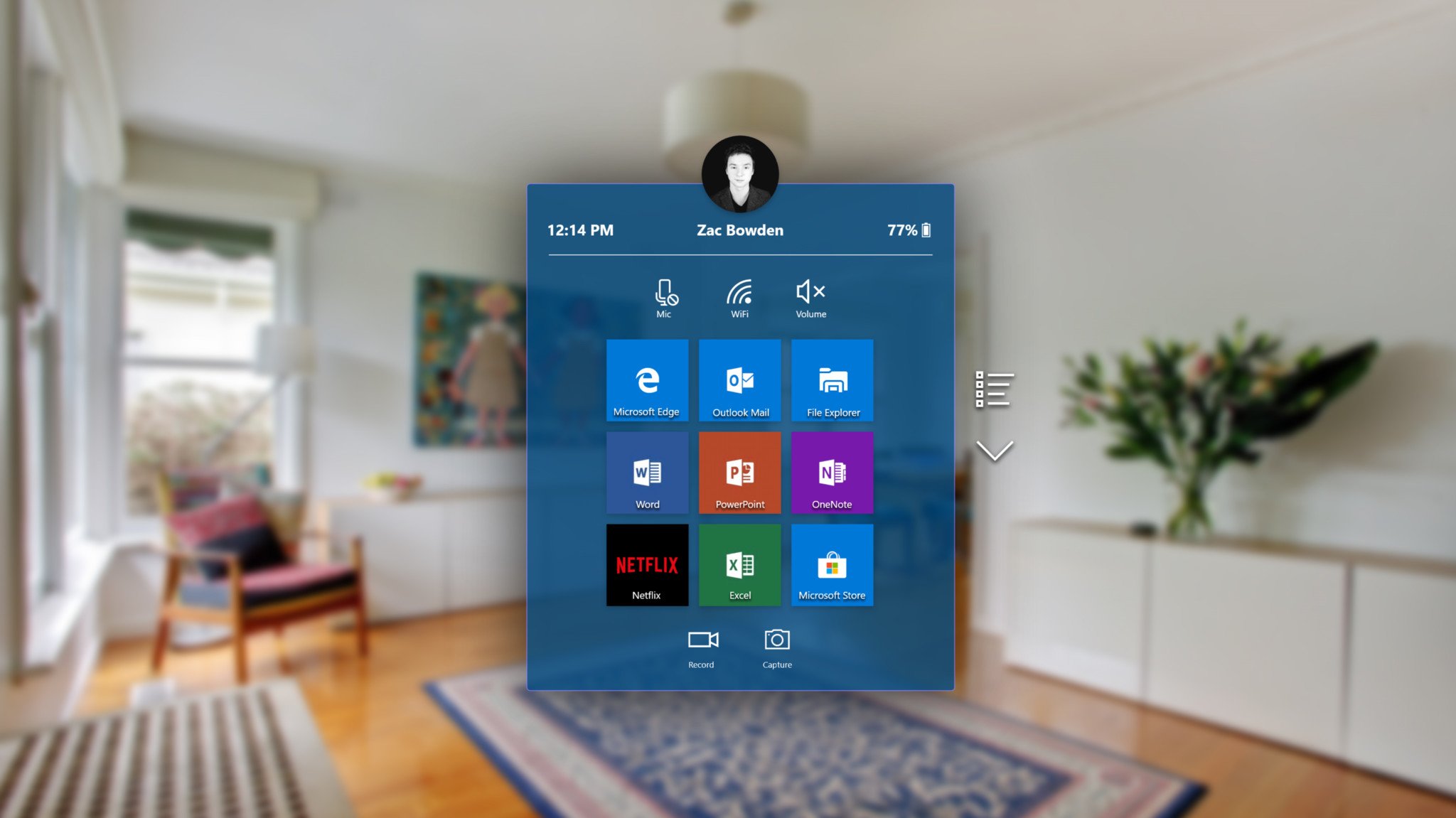
Official Name: Windows Holographic Codename: Oasis WCOS Edition: Holographic
Windows Holographic (codenamed Oasis) is the flavor of Windows Core OS for Mixed Reality experiences like HoloLens 2. HoloLens 2 is Microsoft's first shipping Windows Core OS product. Known officially as "Windows Holographic," this flavor of Windows Core OS is very similar to the old HoloLens 1 OS. From a usability standpoint, HoloLens 2 is a generational leap forward over HoloLens 1, thanks to the ability to touch and interact with holograms directly. Being able to walk up to and manipulate holograms with your hands is a complete game-changer. There's no learning curve to HoloLens 2 once you're aware of how to interact with it. Human instinct is to reach out and touch when you want to interact with something, and that's precisely what you do with HoloLens 2.
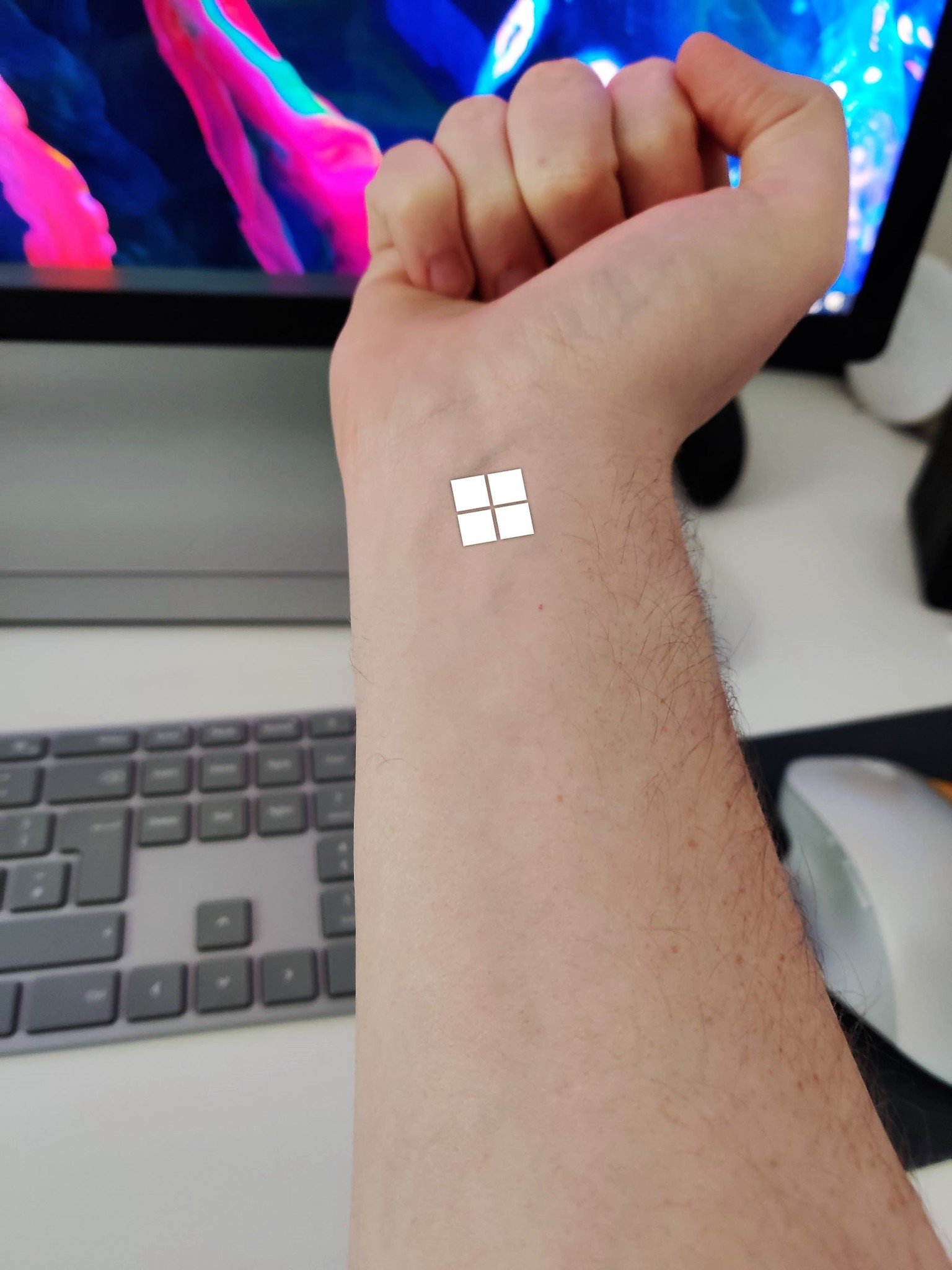
To access the Start menu, the Start button itself is found on your wrist. Just hold up your wrist, and a little Microsoft logo appears. Just tap it with your other hand, and the Start menu will pop up. From there, you can tap on any of the elements in your Start menu to get to where you want to go. Scrolling is a unique experience, and there are two ways to do it. You can do it via "touch," which is as you'd expect; just reach out with your finger and scroll as if you were scrolling on a tablet. There's also eye tracking available on HoloLens 2, and in certain areas that eye tracking is used in scrolling. If you get to the bottom of a window, and there's more content available to scroll, the window will automatically start scrolling.
One new thing I was able to try that wasn't working when the press first went hands-on with HoloLens 2 back in February was the new holographic keyboard. Because users can now reach out and touch holograms, Microsoft had to rework the HoloLens keyboard to accommodate for this. As such, it's a bit larger, and the keys are round now. It works just as if you were typing on a tablet. You reach out and begin poking at the area where the holographic key is showing up. It's not too accurate, but you can bang out a few sentences if you really need to.
Holographic apps can be much more advanced now, thanks to the new hand- and eye-tracking capabilities. In one of the demos, a virtual bird is floating around the room, and if you hold out your hand, the bird will fly to it wherever you are in the room.
During my hands-on, I asked whether the HoloLens 2 can run Win32 programs. Microsoft was not willing to comment, but I know from sources that this is indeed the plan. I asked because I noticed the version of Microsoft Edge that is shipping on HoloLens 2 is the old Edge, not the new Chromium Edge. I don't think the ability to run Win32 programs will be there when HoloLens 2 starts shipping, but it is something that is in the works and will likely come in the form of an update later.
Speaking of updates, the HoloLens 2 I was playing with was running the 19H1 RTM build, and it was working well. Since HoloLens 2 is a Windows Core OS device, it will benefit from the new, improved Windows Update that takes less than a minute to reboot once an update is ready to install.
Under 60 seconds
Faster OS updates
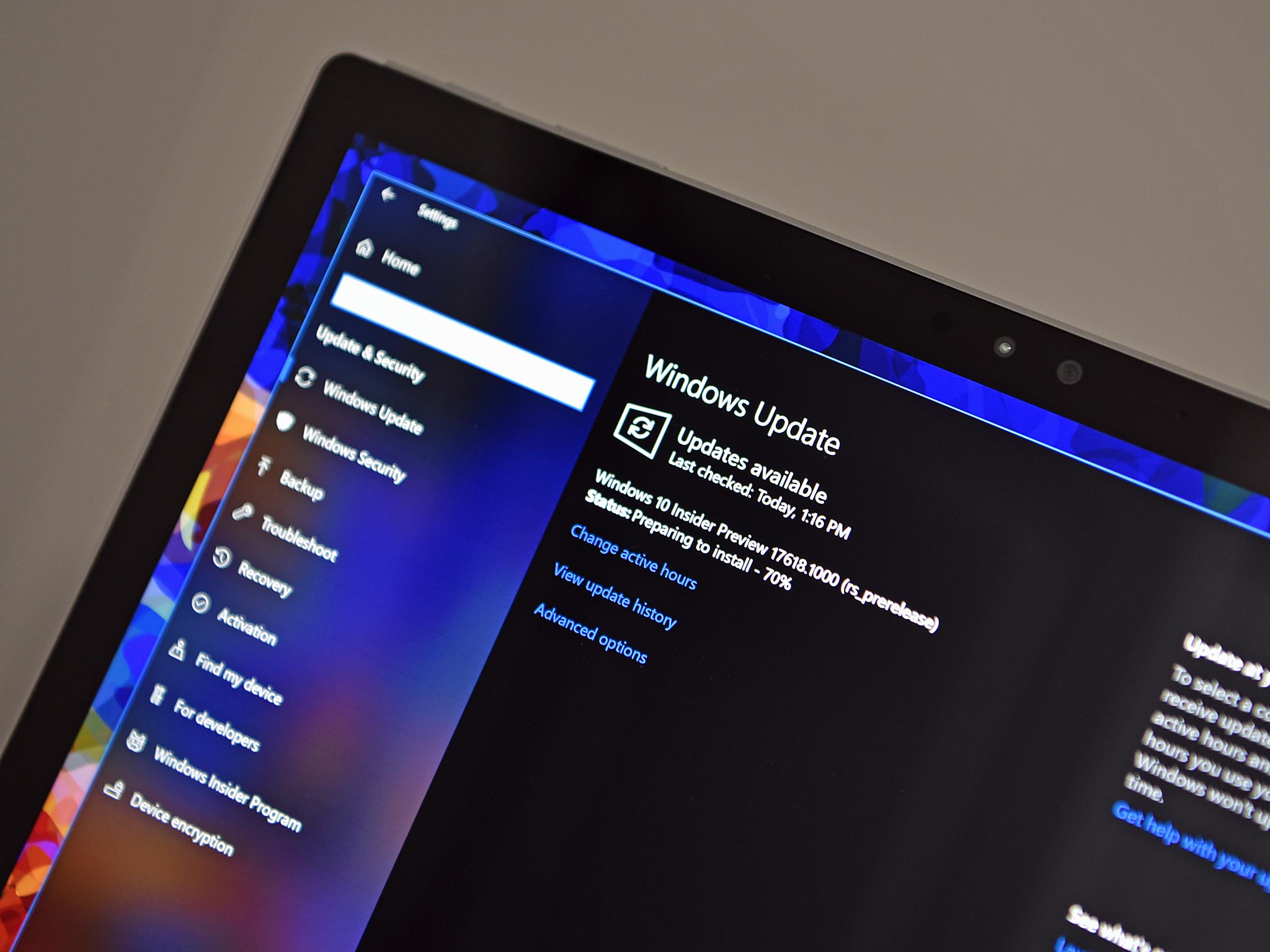
One of the big things Microsoft has been working towards with Windows Core OS is an improved Windows Update system that installs updates in the background and requires less than a minute to restart once those updates are ready to do so.
How it works is very similar to how Android and Chrome OS do updates today. On those platforms, the OS runs in two separate mirrored partitions, and when an update is ready to install, the update is downloaded and installed to the offline partition that you're currently not using. When that's done, the OS will ask you to restart, and while it may look like you're just rebooting, what's actually happening is you're booting into the partition that just spent 25 minutes installing an update in the background.
Windows Core OS keeps system updates to under a minute.
It boots right up as if there was never an update waiting to be installed, and that's because all the installing has already been done while you were busy using the other online partition. Now, you've booted into the partition where the update is installed, and the partition you were just in becomes the offline partition for newer updates to be installed to down the line.
This should solve one of the significant issues Windows has when it comes to updates. Updates can usually take anywhere between 5 to 30 minutes to install, and even longer on older devices. Windows Core OS solves this problem by making it, so the user isn't unable to use their PC for no longer than a minute. It merely restarts like normal, and you're back up and running again.
Supporting legacy apps
Will it run Win32 programs?
In the original pitch for Windows Core OS, legacy Win32 programs were not in the picture, not really. Today, however, Microsoft understands that if Windows Core OS is ever to have a chance, it needs to be able to run Win32 programs. Microsoft is exploring many different ways of bringing legacy program support to Windows Core OS, including virtually through remote and local emulation.
This functionality will be made available where it makes sense, like on Windows 10X. Win32 programs, by default, are sandboxed and containerized on Windows Core OS. This keeps the OS secure, and also allows Microsoft to emulate the additional components required to run a legacy program on a modern OS, without those components weighing down the OS experience even when you're not using a legacy program, like Windows 10 does today. Most users likely won't notice a difference, but it is a difference worthy of note.
Windows Core OS, out of the box, doesn't ship with any of the legacy Win32 programs you find on Windows 10 today. Many of them will be made available as optional features that you can either enable from Settings or download from the Microsoft Store. Things like the legacy Control Panel or File Explorer won't be part of Windows Core OS, however.
The past is prologue
What will happen to current Windows 10?
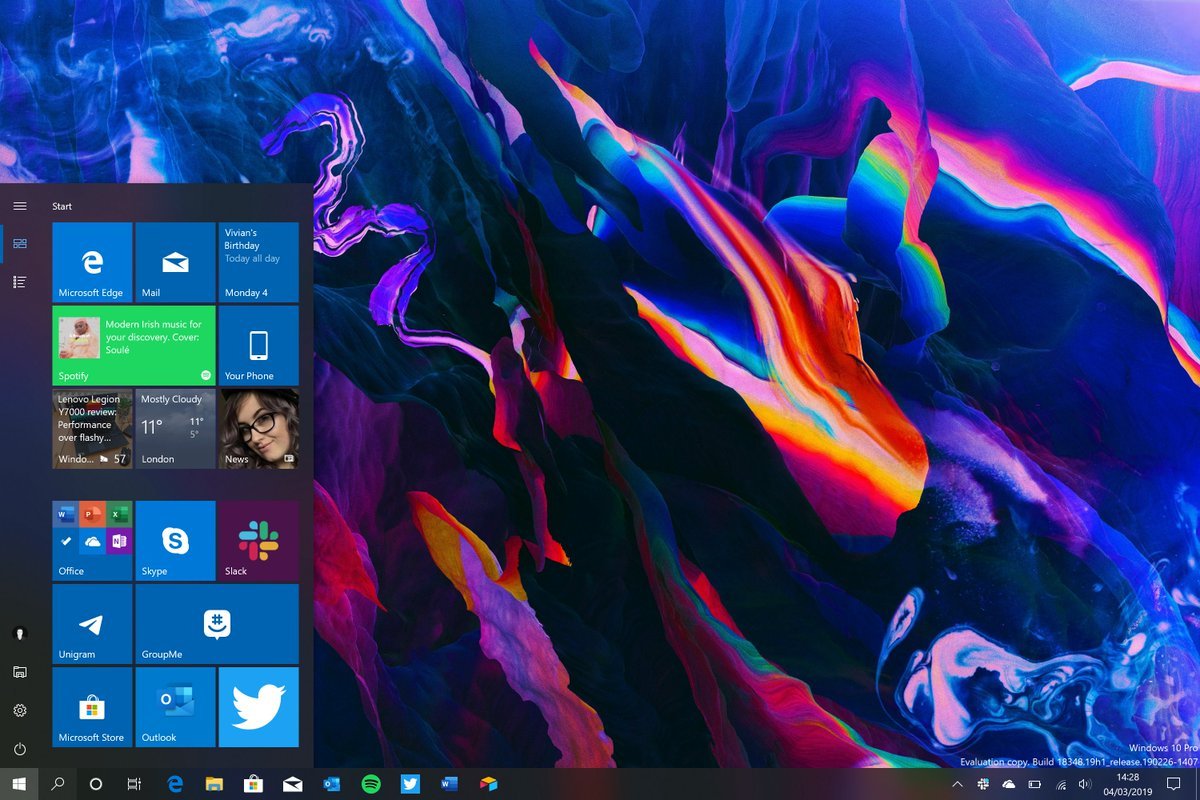
Naturally, that leads us into what this all means for current Windows 10 users. Will existing Windows 10 PCs be getting an update to Windows Core OS? Probably not. From what we've been able to tell, Windows Core OS is for new device experiences only. Legacy Windows 10, known as Windows Classic internally, will continue to be the power user option, that features all the legacy components and backward compatibility for the users that need it.
It's unclear if you'll be able to install an edition of Windows Core OS onto your current device. I'd assume there might be some driver related issues in that area. As far I know, I think Microsoft is looking to adopt the FFU recovery method of things when it comes to loading Windows Core OS onto devices, as that method is much faster to apply to devices than installing from an ISO.
Windows Classic will still be updated with new features and remain on par with Core OS.
Windows 10 as you know it isn't going anywhere. It'll still be the beefy, power-user option for people who need it. Windows Core OS devices will be for new device experiences, and people who don't need everything Windows 10 today has to offer. Windows Core OS can offer simplified experiences for those who prefer something like iOS or Chrome OS, instead of being bombarded and almost intimidated by the complex experience that is Windows 10.
You'll likely find that over time, the Windows 10 we know today will become the option for power-users, enterprises, and gamers, and Windows Core OS will become the option for everyone else. Just like how Apple is trying to position macOS as the power-user option, and iOS as the option for everyone else.
Windows Classic will still be updated with new features and remain on-par Windows Core OS when it comes to OneCore and platform work, but I don't think we're going to see Windows 10 evolve as much as it used to. Microsoft understands that Windows 10 users don't like change, and they just want a PC that works. Any unique ideas or innovations that change up things in a significant way will very likely come to Windows Core OS instead.
Breaking it all down
tl;dr
So what does all of that mean? Here's what Windows Core OS is, at its core:
- A universal base for Windows products.
- Allows Microsoft to build new versions of Windows for different device types quickly and efficiently.
- Shares components and features where it makes sense.
- Features faster updates.
- Is the future of Windows on new and unique device types.
- Doesn't replace legacy Windows 10.
As I mentioned in my initial Windows Core OS write up back in 2017, this is a big deal. It's the future of Windows, and Microsoft is playing the long game here. While Windows Core OS won't immediately take over, in 10-15 years, things will definitely be different. By then, Windows Core OS may be the primarily Windows platform, as it evolves and matures to be as such. We'll update this article frequently with new information as it becomes available. What are your thoughts on Windows Core OS? Let us know in the comments.
Updated March 16 2020: Cleaned up article, removed old information and included new Windows 10X details.

